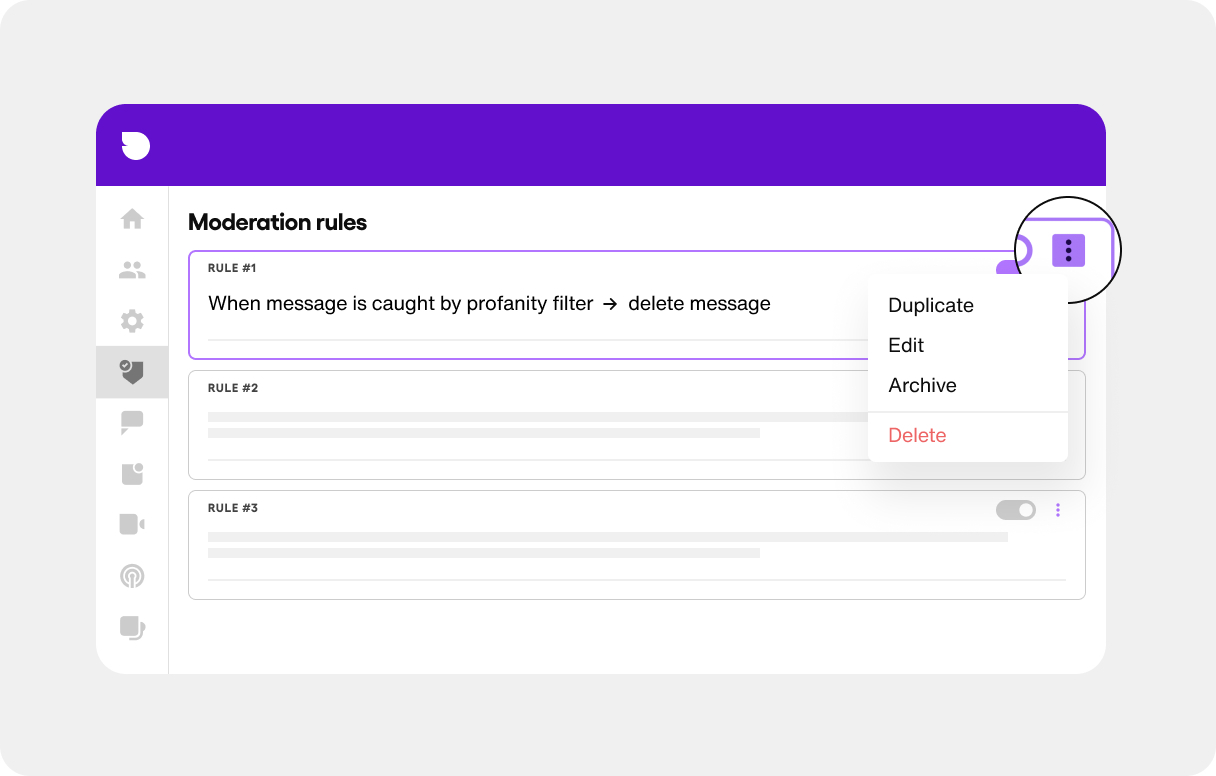Why Investing in Social Media Management is Crucial for Your Brand’s Success

:max_bytes(150000):strip_icc()/SMM_Final_4188900-b14da77d5eee49019768a7b839a19efb.jpg)
Importance of Social Media Management for Brands
Reach and Engage with Target Audience
In today’s digital landscape, brands cannot afford to overlook social media management. Platforms like Facebook, Instagram, and Twitter provide unique opportunities to connect directly with the target audience.
- Tailored Content: Brands can create custom content that resonates with specific demographics.
- Feedback Loop: Real-time interaction allows for instant feedback, enhancing engagement.
The personal touch can transform casual followers into loyal customers.
Build Brand Awareness and Loyalty
Effective social media management is crucial for building brand awareness and fostering loyalty. Regularly sharing engaging content helps brands remain top-of-mind among consumers.
- Consistency is Key: Posting consistently keeps your audience engaged and updated.
- Community Building: Encourage conversations and foster a sense of community around your brand, which strengthens loyalty.
For instance, a local cafe’s Instagram filled with vibrant, mouth-watering images can attract food lovers and create a devoted following.

Understanding Social Media Algorithms
Impact on Content Visibility
Navigating social media algorithms is essential for brands aiming to enhance content visibility. Algorithms determine which posts appear on a user’s feed, affecting engagement metrics significantly.
- Relevance Matters: Content that aligns with user interests gets prioritized.
- Engagement Signals: Likes, shares, and comments boost content visibility.
For example, a brand that encourages discussions often sees higher engagement, which can help them reach a broader audience.
Leveraging Algorithm Changes
Staying informed about algorithm changes can give brands a competitive edge. Platforms are constantly evolving, and understanding these shifts can enhance strategy.
- Adapt and Overcome: Regular reviews of analytics help identify what works in the current algorithm landscape.
- Content Diversity: Mixing formats—such as videos, stories, and polls—can maximize reach.
By proactively adapting to these changes, brands can ensure their content remains visible, captivating, and relevant.

Creating a Consistent Brand Image
Brand Voice and Messaging
Establishing a consistent brand image starts with a clear brand voice and messaging. This voice reflects the personality of the brand and should resonate with the target audience.
- Tone Matters: Determine whether your brand is casual, professional, or playful based on your audience’s preferences.
- Core Values: Communicating core values consistently helps in building trust.
For example, a sustainable fashion brand might emphasize eco-friendly practices in all messaging, creating a cohesive narrative.
Visual Aesthetics and Brand Identity
Alongside voice, visual aesthetics play a crucial role in brand identity. From color schemes to logos, these elements should reflect the brand’s mission and values.
- Color Psychology: Different colors evoke specific emotions—use them strategically.
- Unified Graphics: Maintaining consistency in graphics creates a recognizable identity.
Imagine a tech company with sleek, modern designs; this aesthetic reinforces their innovative reputation and attracts their tech-savvy audience. Consistency in both voice and visuals solidifies the brand’s identity, making it memorable.
:max_bytes(150000):strip_icc()/SMM_Final_4188900-b14da77d5eee49019768a7b839a19efb.jpg)
Enhancing Customer Service and Support
Real-time Communication
In the realm of social media, enhancing customer service means embracing real-time communication. This immediacy allows brands to connect with customers instantly, fostering trust and loyalty.
- Quick Responses: Addressing inquiries promptly shows customers they are valued.
- Live Chats: Platforms like Facebook Messenger can facilitate direct interactions.
For instance, a skincare brand that responds swiftly to questions can create a loyal community eager to share experiences and results.
Handling Inquiries and Feedback
Equally important is the thoughtful handling of inquiries and feedback. Effective management of comments and messages can turn challenges into opportunities for growth.
- Constructive Feedback: Use positive and negative feedback to refine offerings.
- Public Responses: Addressing concerns publicly portrays transparency and accountability.
When a restaurant openly acknowledges a customer’s complaint and resolves it, it reassures potential diners of its commitment to service. This approach not only enhances customer support but also builds a strong brand reputation.
:max_bytes(150000):strip_icc()/SMM_Final_4188900-b14da77d5eee49019768a7b839a19efb.jpg)
Analyzing Social Media Metrics
Measuring ROI and Performance
Analyzing social media metrics is crucial for understanding the return on investment (ROI) and overall performance. By delving into key analytics, brands can gauge the effectiveness of their campaigns.
- Engagement Rates: Monitor likes, shares, and comments to evaluate content resonance.
- Conversion Tracking: Assess how social media interactions lead to sales or sign-ups.
For instance, a clothing brand might discover that campaigns showcasing customer stories yield higher engagement, guiding future content creation.
Adapting Strategies Based on Data
Data-driven decisions are essential in today’s dynamic market. Brands should harness analytics to adapt strategies effectively.
- Trend Analysis: Identify emerging trends and audience preferences that can shift.
- Content Optimization: Refine content types and posting schedules based on performance metrics.
When a pet supply company notices that videos demonstrating product usage outperform static posts, they can pivot their strategy to enhance engagement. By continuously adapting based on data, brands can ensure they remain relevant and effective in their social media efforts.

Influencer Marketing and Partnerships
Collaborations for Brand Promotion
Moving into the realm of influencer marketing opens new avenues for brand promotion. Collaborating with influencers allows brands to tap into their followers, enhancing visibility and engagement.
- Authenticity: Influencers provide a personal touch that resonates with their audience.
- Creative Campaigns: Unique collaborations can lead to inventive marketing strategies.
For instance, a fitness brand partnering with a well-known athlete for a workout challenge can significantly boost awareness and interest in their products.
Identifying the Right Influencers
However, not all influencers will align with a brand’s values. Identifying the right ones is key to a successful partnership.
- Alignment with Values: Choose influencers whose personas resonate with your brand’s mission.
- Engagement Over Follower Count: Prioritize influencers with highly engaged audiences over those with large but passive followings.
For example, a beauty brand may find a niche beauty influencer who promotes inclusivity and diversity, creating a more authentic connection with potential customers. By focusing on meaningful partnerships, brands can effectively reach their target audience through trusted voices.

Crisis Management and Reputation
Managing Negative Feedback
Crisis management is crucial in maintaining a strong brand reputation, particularly in the age of social media. Brands must be equipped to handle negative feedback swiftly and effectively.
- Active Listening: Monitor social media channels for mentions and comments to identify potential issues early.
- Empathetic Responses: Acknowledge customer concerns in a respectful manner to show understanding.
For instance, a popular restaurant facing criticism for a dish might benefit from promptly addressing the feedback and offering a solution, like a complimentary meal.
Responding to PR Challenges
Even larger PR challenges can arise unexpectedly. Having a proactive strategy is essential for effective response.
- Clear Communication: Outline your message and ensure all spokespeople are on the same page.
- Transparency: Address issues head-on rather than sidestepping them to build trust.
When a tech company faces backlash due to a data breach, a genuine apology and commitment to improving security measures can turn a potentially damaging situation into an opportunity to rebuild customer trust. By effectively managing feedback and challenges, brands can navigate crises while preserving their reputation.

Automation Tools and Technology
Streamlining Social Media Tasks
In today’s fast-paced digital landscape, automation tools and technology are invaluable for streamlining social media tasks. These tools help brands maintain consistency and efficiency.
- Centralized Management: Platforms like Hootsuite or Buffer allow management of multiple accounts from a single dashboard.
- Automated Responses: Setting up chatbots can handle FAQs, freeing up time for more complex inquiries.
For example, a small business can use automation to quickly respond to common questions, allowing them to focus on personalized customer interactions.
Scheduling Posts and Monitoring Performance
Scheduling posts in advance can enhance a brand’s social presence and ensure timely content delivery.
- Optimal Timing: Tools enable users to post during peak engagement times, maximizing visibility.
- Performance Tracking: Built-in analytics tools provide insights into what content resonates most with the audience.
Imagine a bakery scheduling posts showcasing daily specials every morning, ensuring their offerings reach customers at the right time. By leveraging automation, brands can not only enhance their efficiency but also make data-driven adjustments to improve their overall social media strategy.



